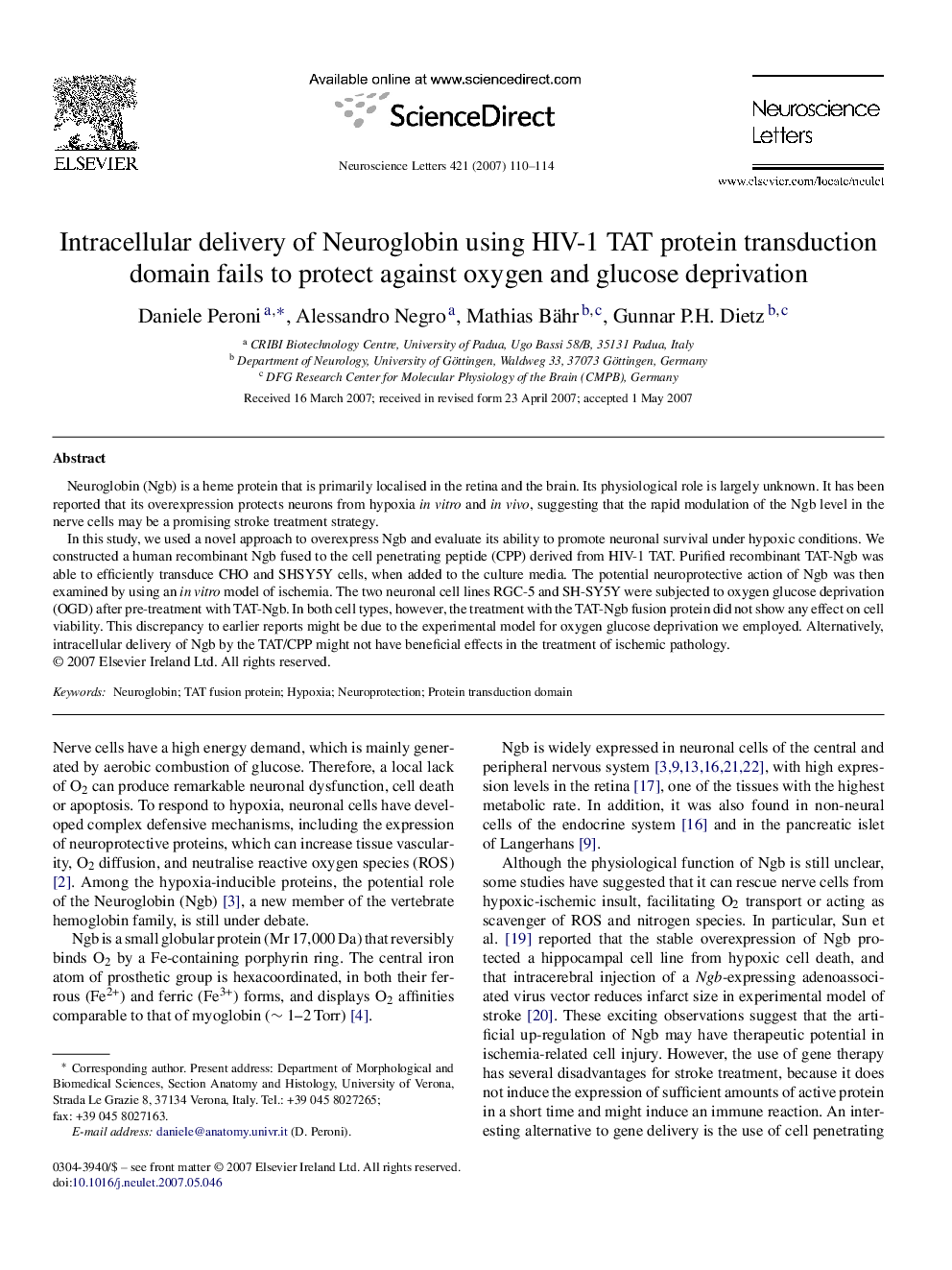| Article ID | Journal | Published Year | Pages | File Type |
|---|---|---|---|---|
| 4349068 | Neuroscience Letters | 2007 | 5 Pages |
Neuroglobin (Ngb) is a heme protein that is primarily localised in the retina and the brain. Its physiological role is largely unknown. It has been reported that its overexpression protects neurons from hypoxia in vitro and in vivo, suggesting that the rapid modulation of the Ngb level in the nerve cells may be a promising stroke treatment strategy.In this study, we used a novel approach to overexpress Ngb and evaluate its ability to promote neuronal survival under hypoxic conditions. We constructed a human recombinant Ngb fused to the cell penetrating peptide (CPP) derived from HIV-1 TAT. Purified recombinant TAT-Ngb was able to efficiently transduce CHO and SHSY5Y cells, when added to the culture media. The potential neuroprotective action of Ngb was then examined by using an in vitro model of ischemia. The two neuronal cell lines RGC-5 and SH-SY5Y were subjected to oxygen glucose deprivation (OGD) after pre-treatment with TAT-Ngb. In both cell types, however, the treatment with the TAT-Ngb fusion protein did not show any effect on cell viability. This discrepancy to earlier reports might be due to the experimental model for oxygen glucose deprivation we employed. Alternatively, intracellular delivery of Ngb by the TAT/CPP might not have beneficial effects in the treatment of ischemic pathology.
